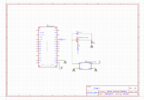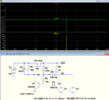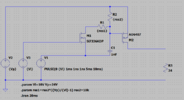Trying to keep current required by MOSFET low. Requesting help with a MOSFET latching schmatic and selecting MOSFET. Micro-controller operates at 3.3 Volts. Will be switching 12 Volt DC. 12 Volt is supplied to a step-down buck converter for 5 Volts powering the video camera.
Have coded ESP32 to utilize EByte. E220 module to wake by WOR (Wake on Radio) both receiver and ESP32 from deep sleep, this will occur by URL request and has a low daily occurence of requests.
William
Have coded ESP32 to utilize EByte. E220 module to wake by WOR (Wake on Radio) both receiver and ESP32 from deep sleep, this will occur by URL request and has a low daily occurence of requests.
William
Last edited:



